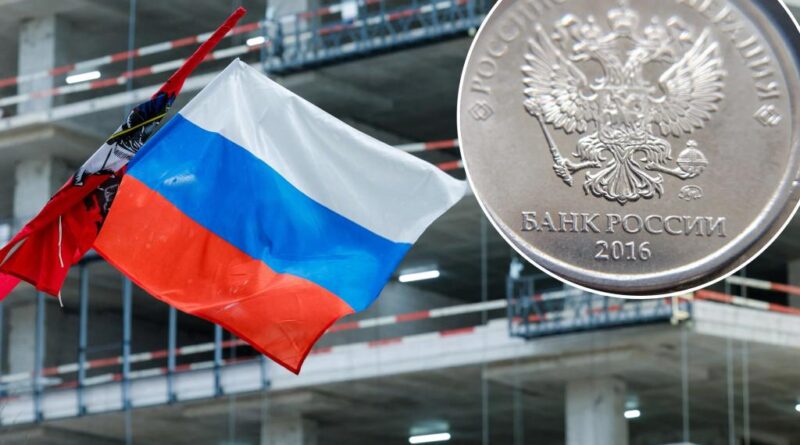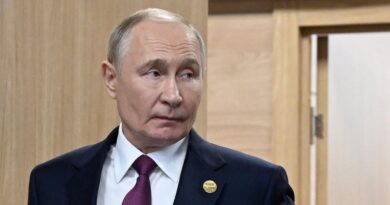The Economic Impact of Russia’s War with Ukraine is Severe

When a purported global superpower like Russia appeals to Iran for drones, seeks artillery shells from North Korea, and watches its Black Sea fleet get dismantled by a nation lacking a navy, it’s evident that something is amiss. Before 2022, Russia’s military claimed to be second only to the United States. Now, as the bitter joke suggests, it ranks as the second strongest in Ukraine.
Donald Trump seeks to negotiate an end to the Russo-Ukrainian war. However, for a cease-fire to avoid returning as a larger disaster, Moscow must confront a harsh reality — concluding its illegal campaign of conquest is not a concession but a necessary step that will ultimately benefit Russia itself.
Trump’s call to President Vladimir Putin is both timely and essential. He is correct: Russia’s economy is “failing” and “IT’S ONLY GOING TO GET WORSE.” He recently unveiled a maximum pressure campaign aimed at Iran, which should be mirrored in a robust approach to curb Moscow’s aggressive ambitions.
The Kremlin previously showcased its intent to recolonize Ukraine with confidence—those days are gone. The Russian giant is showing its vulnerabilities. Its economy is no longer tightening its belt or shifting into wartime mode; instead, it resembles a loud ticking time bomb.
Inflation increased to 9.5% last year, nearly tripling the US rate, driven by reckless military expenditures. Yet, these statistics should be regarded with skepticism. In 2024 alone, prices for essentials like potatoes and onions experienced spikes of 91% and 47%, respectively. The Central Bank’s drastic response—raising interest rates to 21%—is illuminating regarding the economic condition. Since mid-2024, the ruble has plummeted over 20%, now worth just a penny.
The Kremlin’s National Wealth Fund has decreased to $31 billion, a drop from $210 billion in June 2022 — an astonishing decline. As fitting for a nation John McCain famously called “a gas station masquerading as a country,” Russia relies on oil sales to fund its treasury. This, too, is suffering; the latest US sanctions against Moscow’s shadow fleet have driven shipping costs sky-high and reduced potential buyers.
Recent studies have revealed that Moscow’s military-industrial complex has been upheld by a dual financing strategy. In essence, it’s a façade. Although experts had clear visibility on the stated defense budget, which totals $315 billion over three years, they failed to account for another state-sanctioned scheme quietly diverting $210-250 billion into non-profitable arms manufacturers. This imposed lending could become a critical vulnerability and might lead to a wave of bankruptcies.
The situation at the front lines isn’t promising either. Over the past seven months, Russian military casualties have surged to nearly 300,000, nearly equaling the combined total of the previous two years. Unsurprisingly, Moscow struggles to keep its troop numbers up. Estimated recruitment rates of 500-600 soldiers per day only satisfy about half of the replacement needs. Meanwhile, Russia’s “meatgrinder” tactics have escalated average daily casualties to an astonishing 1,570 as of December 2024, with minimal territorial gains to show for it.
The Kremlin now offers unprecedented loan forgiveness up to 10 million rubles ($94,500) as an incentive for recruits, desperately trying to avert another unpopular mobilization that could elicit mass emigration and domestic turmoil.
Are we on the brink of witnessing the collapse of the Russian economy or its war-making capabilities? While not inevitable, it is clear that Russia currently needs a defeat. Both Germany and Japan found their salvation through post-war reckonings. A similar opportunity could present itself for Russia, which desperately requires not additional territory but a much-needed reckoning.
It is crucial to affirm that the Free World is prepared to defend itself, undaunted by victory. The Kremlin likes to insinuate or directly threaten the use of catastrophic weaponry. However, yielding to such intimidation would signal weakness to Moscow, making future nuclear confrontations virtually unavoidable. History imparts the lesson that peace is fostered not through retreat but through determined resolve. Deterrence relies on capacity coupled with credibility; if America loses the latter, the former will prove meaningless.
An often-overlooked fact is that we previously feared Moscow’s actions in defeat — but now Putin has offered us insight. After Russia’s ignominious withdrawal from Syria, backing the Assads since the 1970s, the Russian leader simply announced an alignment with international law and respect for sovereignty. The Kremlin’s control of the information narrative is comprehensive. When Russian forces exit Ukraine, Moscow will surely spin this as a victory.
World War II was the final war of aggression fueled by imperial fantasies — one that was further enabled by appeasement — resulting in a global catastrophe. Let us not make that mistake again. While Putin displays bravado, Russia’s economy erodes, its military grows increasingly strained each day, and its global influence diminishes. Ronald Reagan famously urged Gorbachev to tear down the Berlin Wall; today, we must demand that Putin cease his aggression and withdraw from Ukraine. It’s time to give peace through strength a fighting chance and remind the aggressor that invading neighboring states leads to no good outcomes.
Andrew Chakhoyan is an academic director at the University of Amsterdam and has previously served in the US Government at the Millennium Challenge Corporation.



